Our ‘rule of thumb’ guide to help you get the most out of an adventure to India.
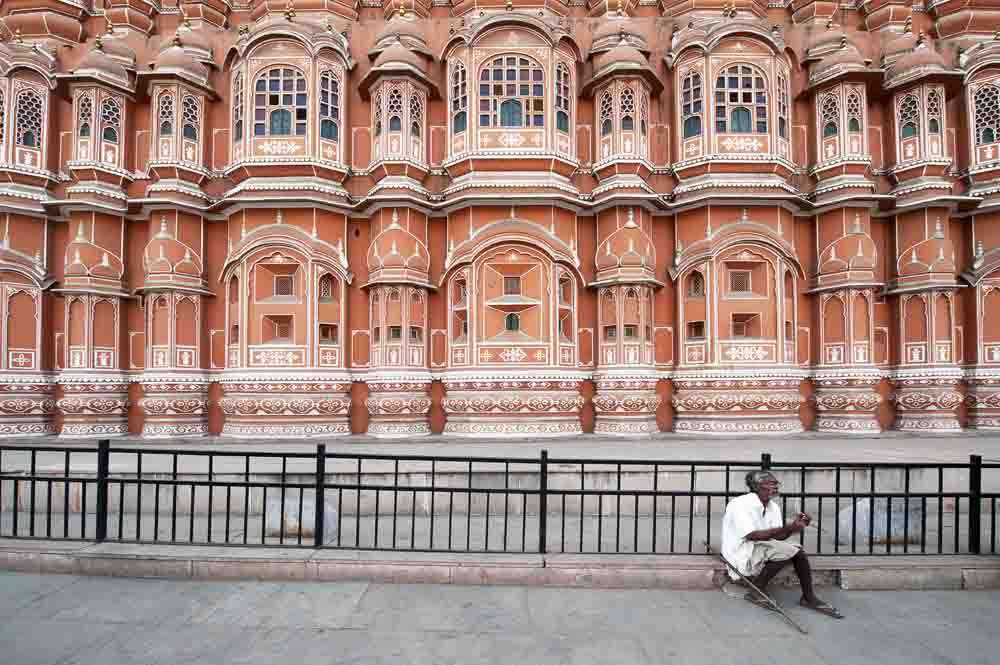
If you find the following information useful and wish to consider travelling to any part of India, we’d be pleased to help you plan and turn it into reality – just click ‘enquire’ and let us know what you’d like to do.

 The first thing to come to terms with about any visit to India is that you’re not going to see it all in one go!
The first thing to come to terms with about any visit to India is that you’re not going to see it all in one go!
India is a vast continent, absolutely packed with interesting attractions, festivals, colours, noise and frenetic activity; its often tiring to travel around because of the great distances involved and the task of simply assimilating and coming to terms with all of the diverse cultures, religions and practices within it.
People either love or hate India – and we firmly believe that you can’t fail to love it if you simply prepare yourself for it.
This guide isn’t a description of every sight and landmark you’ll see but a short set of six considerations and questions you should ask yourself in order to make the most of planning any holiday in this fantastic country.
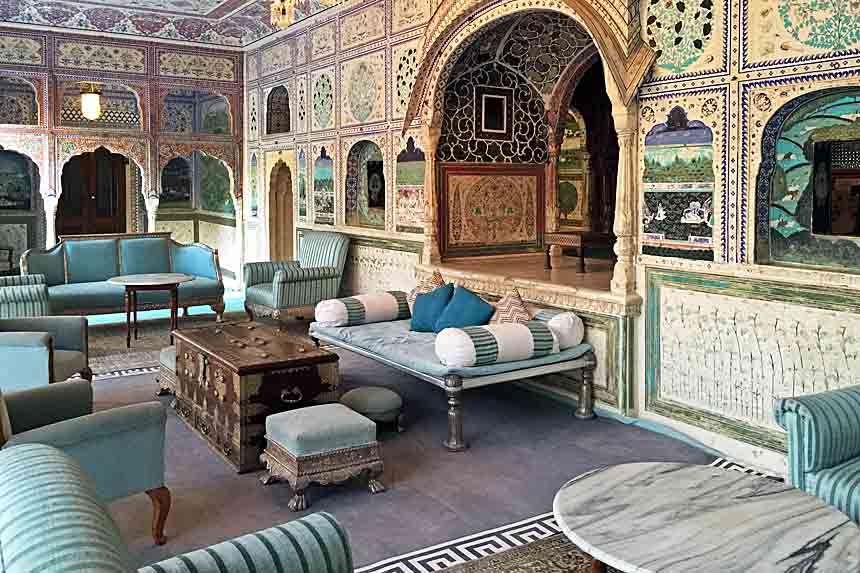
General
India concentrates more sensory overload into one hour than most countries do in a week.
You can choose to stay in hotels that will eclipse some of the best you’ll find anywhere in the world; palaces that are as much part of the holiday experience as the locations you visit; luxury tents in the wildest places – and some rather basic establishments that seem more akin to barracks than hotels but happen to be in the places you want to visit.
Eat in the best hotels, or off the street stalls where food comes straight from the heat and you’ll be fine. Eat in places that look iffy (small town restaurants/hotels) and you’ll end up feeling iffy as well. Drink bottled water with unbroken seals and avoid ice unless you’re in a five star hotel.
Accept that there will be a huge contrast between rich and poor but that all have their own kind of magic about them.
Begging is almost exclusively evident only in major cities, where it has become a profession that preys on tourists. Its not to say that you should be immune to suffering, simply that if inclined you should contribute to recognised charities, not to beggars on the street who, though pitiful, are pimped for that reason. Give to one and you’ll attract many. Once outside of major cities you will rarely see beggars and evidence of extreme poverty. People do live very simply in rural areas but there’s a charm and natural beauty in their way of life.
Travel has become so much easier around the country. Internal flight is now commonplace. Air conditioned private transfers smooth and efficient. Rail travel is still much less than luxurious and the road systems are generally poor, crowded and manic. However, whilst you might feel that you’re living dangerously by travelling on the roads, we never saw an accident in all seven years of living there – vehicles are rarely able to exceed 50mph (80kph) and drivers are so attuned to the unpredictable actions of goats, buffalo, children, women with head-loads of wood, broken down lorries, ramshackle taxis, overladen scooters and random wildlife that they are far more constantly alert than any European driver at 90 mph on a motorway.
Respect India’s culture. There are numerous religions, each with its own customs. Generally; say ‘Namaste’ when meeting someone, preferably with hands clasped together in front of you as if praying (even though a Hindu greeting, the Muslim faith also recognise this greeting), don’t get annoyed, don’t put your feet on a table or chair, avoid passing things with your left hand, dress modestly.
Go with the flow. Don’t try to impose Western efficiency, timekeeping, manners and behaviour into Indian culture – you’ll be the only one who suffers. Part of any visit to India is to absorb what it has to offer, not to impart your way of doing things for their benefit.
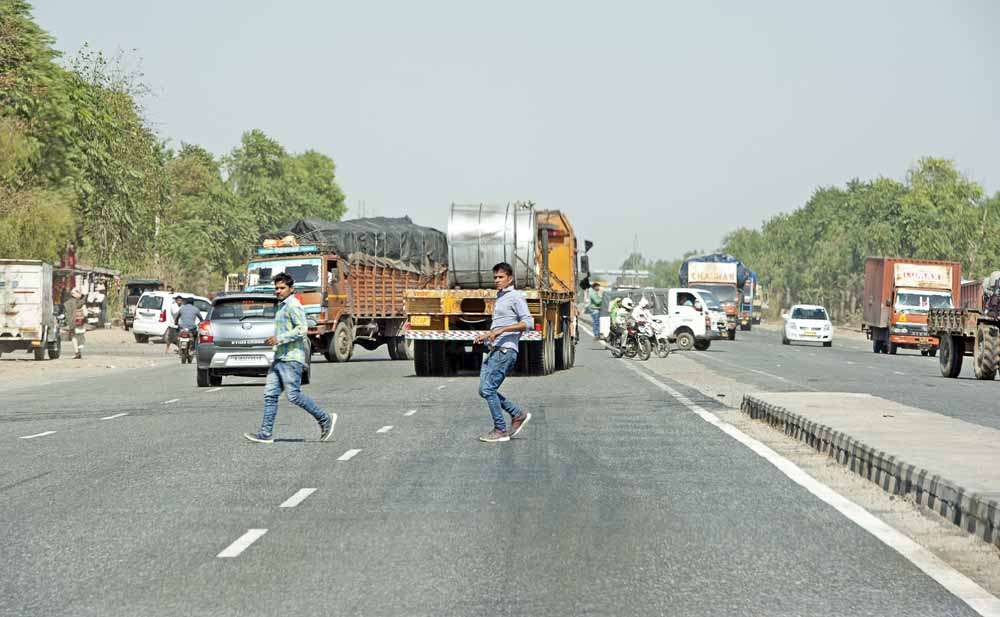
When are you going?
If you use the rule of thumb that from end of September until February you chase the sun and avoid the shadows, whereas from March until June you chase the shadows and avoid the sun; with mid June to September being a good time to hide from the monsoons – you won’t go far wrong.
Cold in central India means just above freezing at night, whereas daytime hot in central India in June can reach 50 degrees C. Altitude moderates these temperatures eg. foothills of the Himalayas but generally a lovely time to travel to India is between late October and end of March.
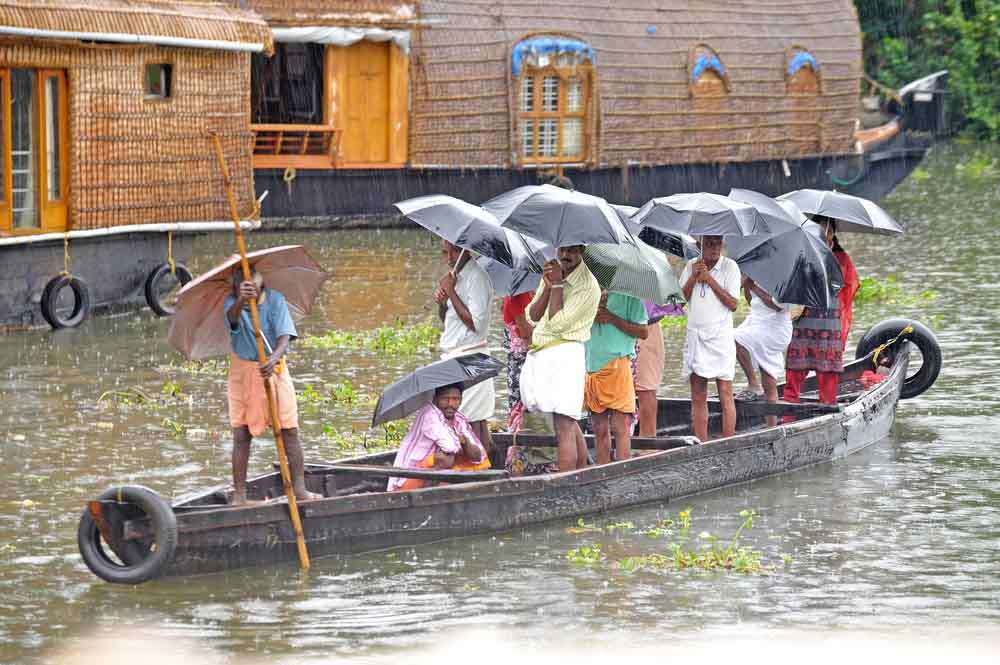
Why are you going? Where are you going?
If you ask yourself this and can answer it before you start planning your holiday then you’ll be half way towards enjoying your time in India. We’ve grouped a series of suggestions under each of the following headings in order to shortcut some of your thought process.
Just scroll to the statement that most suits your aims.

1) This is your first holiday in India and are you looking for a cross section of attractions and sights to give you a feel for whether you’d like to come back again in the future.
You may, or may not, have heard of the ‘Golden Triangle’. Its three sides of a journey that takes in Delhi, Agra (for the Taj Mahal) and a city or two in the State of Rajasthan before returning to Delhi. As a minimum you’ll need ten days in India to do it justice and you could extend it to two or even three weeks by adding more and more locations and attractions within the three sides of the triangle. If you skew the triangle to go further east as well, then you could include Varanasi/Benares (Bathing and cremation ghats on the Ganges), Khajuraho (magnificent Hindu temple complexes with intricate sculptures) and Kanha/Bandhavgarh (two significant national parks).
However, for an initial ten day/two week tour then consider the following:
Its easy to spend a day sightseeing in Delhi and if you have a private car you’ll get around a lot quicker and cover more ground.
In Agra you’ll definitely want to see the Taj Mahal – its simply beautiful – but ideally you need to get there as the gates open at 6am. There are several other landmarks in Agra (Red Fort, Baby Mahal etc) but the city itself is dire. A full day and a morning is sufficient.
En route from Agra to Rajasthan its worth stopping for three or four hours at Fatehpur Sikri – Emperor Akbar’s deserted city that’s remarkably well-preserved.
Rajasthan is where you extend or contract your holiday to suit the time you have allowed. The cities of Jaipur, Udaipur, Jodhpur, Ajmer and onward to Kota, Pushkar (camel fair), Bikaner, Samode etc that leads you through a magical world of forts, markets, as well as ornate and highly decorated Murghal and Hindu palaces, many of which you can actually stay in.
If you want to include wildlife in your itinerary then Ranthambore National Park is in Rajasthan and an excellent opportunity to see tiger and a host of other animals if you allow for at least three game drives (over two days). There are some great places to stay here as well – from old palaces to luxury tented camps.
We highly recommend that you take a private car with driver for this first foray into India – or even if you’re repeating an earlier trip but extending it – as you have control over when and where you stop (India’s fields and villages are as fascinating as her palaces) and are able to retreat into air-conditioned comfort when all around you are losing their cool.
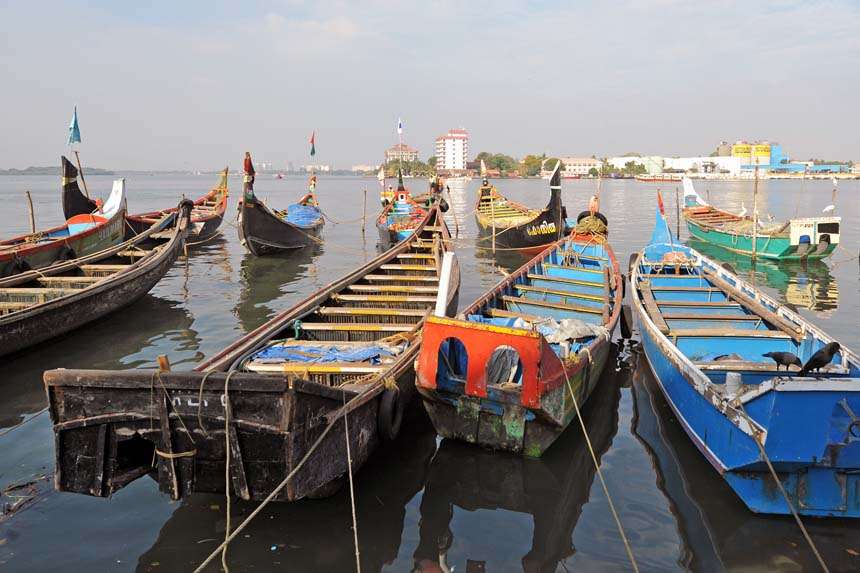
2) You’re a seasoned traveller to India looking for something different.
As a very general rule – the central core of India (around the state and borders of Madhya Pradesh) is where most of the popular attractions and tourist oriented activities are concentrated and the further you travel away from it the more interesting, remote and less tourist oriented are the locations.
Distances between places of interest become stretched, the infrastructure not so efficient – or existent – and the likelihood of top notch accommodation a little more difficult (but not impossible) to guarantee.
Any one of these forays north, south, east or west from centre can – and should – occupy most of your time (at least two weeks if you don’t want to be rushed) rather than you attempt to fit too much in.
North. Heading north, you’ve got the possibilities of Corbett National Park, Shimla, Dehra Dun, Rishikesh, Mussourie in the foothills of the Himalayas and Srinagar (assumng there’s no conflict there).
South. Head south and you journey into the likes of multi-colonial influence and the original Dravidian peoples of India. Choose to visit Kerala with its backwaters cruises, quaint Fort Kochi with its Portuguese and Dutch influence, ‘French’ Pondicherry, Mysore, ‘British’ Ootacamund and the Nilgiri Hills, Coorg, Nagarahole or Periyar National Parks, or the beautiful Western Ghats.
East. Head East to the old capital of Calcutta (Kolkata), into the hills of Sikkim and Darjeeling on the ‘toy’ train; further afield past Bangladesh into the largely undiscovered eastern states of Meghalaya, Tripura, Manipur, Assam and Nagaland where National Parks, wilderness, the wettest place on earth (Cherrapungi) and towering Himalayan mountains vie for your attention.
West. Gujarat and the Rann of Kutch, Rajkot, the Asiatic Lion, Wild Ass and desert, more desert. Not everyone’s choice but another dimension to this kaleidoscopic country.
Whichever direction you choose it might involve an internal flight and private car with driver to get you around whilst there – why make life difficult by train?
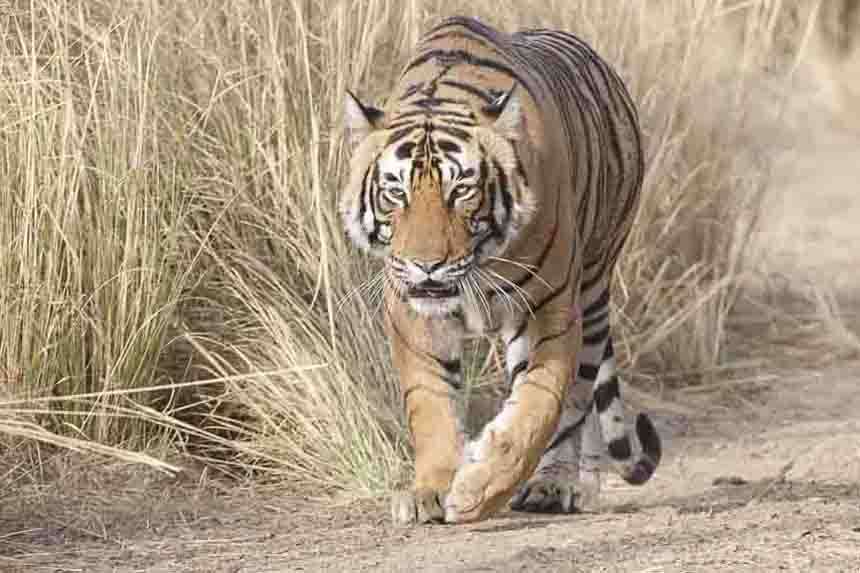
3) Tiger. You’re a wildlife enthusiast who has limited time and wants to stand the best chance of seeing tiger in the wild.
You immediately make a compromise by putting tiger at the top of your wishlist. The parks with the highest density of tiger are, not surprisingly, the most popular. This creates high demand for accommodation, high traffic levels in the parks and a less ‘natural’ experience overall.
In recent years the Indian Forest Department has introduced quotas for numbers of jeeps entering each of a number of access gates around the parks, which are then rotated on a daily basis so that you might, or might not, get the prime areas where known tigers circulate if you are only at a park for a couple of days.
The only way to ensure the best chance of seeing tiger is to stay at a park for at least three days so that you experience about six game drives (morning and evening on each day). You might get lucky on your first game drive, you might miss out all together if unlucky – but you need to remember that the tiger isn’t on the payroll and you are in ‘the wild’.
Elephants are sometimes offered as an alternative to jeep safaris, generally on a first come, first served basis – so they’re always booked up quickly. You should attempt to do this before you leave for the country.
The most popular parks (by virtue of also being most accessible) with the highest density of tiger are Ranthambore (Rajasthan), Kanha & Bandhavgarh (Madhya Pradesh), Corbett (Uttarakhand). A detailed report brought out by the Wildlife Institute of India and the National Tiger Conservation Authority states that tiger density in Kaziranga (Assam) is 12.72 per 100 square km, followed by the Jim Corbett National Park (11) and Bandipur National Park (10.28) in Karnataka.
Statistics about tiger are notoriously flawed by virtue of tiger census methodology and further skewed by poaching activities that can decimate a park’s population; but you can use the above as a rough guide when planning your trip.
Unless you visit both Kanha and Bandhavgarh together, which are within easy reach by car of one another, you’ll need to fly between other parks given their geographical remoteness from one another within India.
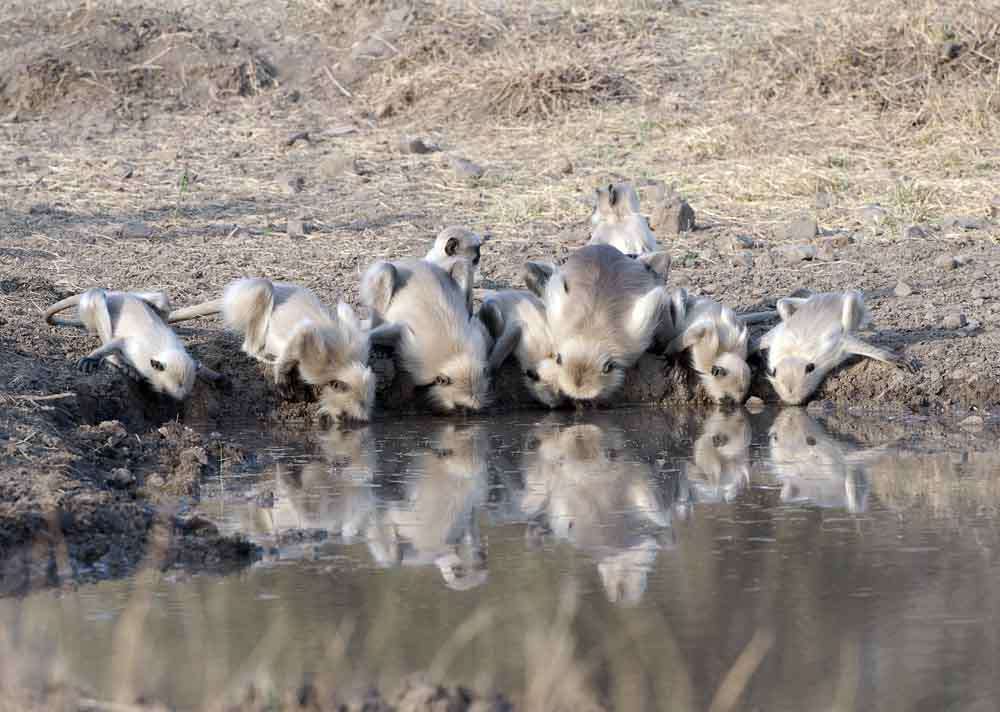
4) Wildlife in the wilderness. You’re a wildlife enthusiast who wants to get away from the beaten track and principal tourist routes and parks.
Its becoming increasingly difficult to find a truly ‘wild’ experience in India as the country seeks to capitalise on tourism in all National Parks. The rule of thumb is that the further you get away from popular tourist routes eg. Golden Triangle and the ‘Tiger State’ of Madhya Pradesh, generally the lower tourist and tiger numbers become.
If you’re not dead set on tiger this can be a great bonus as parks are often well stocked with myriad other wildlife that includes numerous primates, prey base and bird life. With lower tiger numbers the likelihood of increased leopard presence in a park can also occur.
As of today there are over 100 national parks encompassing an area of 40,500 sq km (15,600 sq mi), covering 1.23% of India’s total surface area. These range from the Andaman Islands and extend throughout virtually every state in India. The pursuit of peace and quiet and a truly natural experience will engender an inversely proportional drop in standards of accommodation as the more luxurious lodges and hotels aren’t present.
Lower standard hotels bring a whole new meaning to the word ‘basic’ in India. Expect concrete structures, hard beds, poor facilities and catering, with limited water supply. Tented camps tend to be more rudimentary than luxury but if you’re seeking a genuine Indian wildlife experience then these issues won’t concern you so much – everything in life is a compromise – so its down to how much of an adventurer you wish to be!
We spent seven years working with the Indian Forest Department so have experience of many of these parks – so the best way to plan a more in depth itinerary is to determine what animals/birds/insects etc you wish most to see and then contact us for our recommends and help.
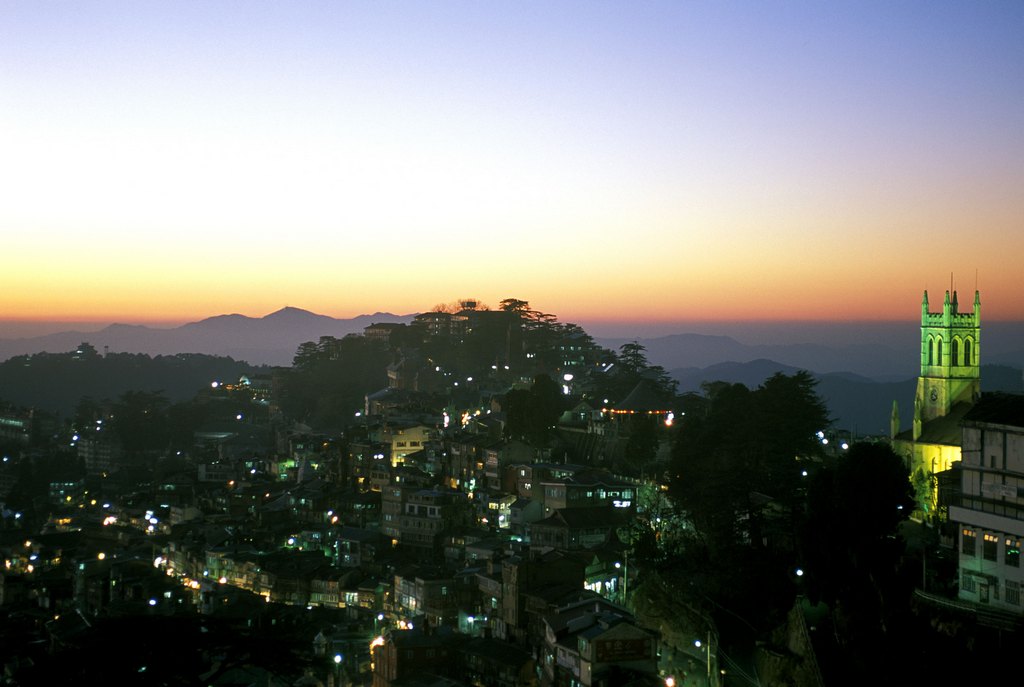
5) You’d like to see some of the more important British ‘Raj’ sights in India to get a feel for its history.
Your travels in this regard might be influenced by either one of two considerations 1) you had family or relatives in the British Army in India, or 2) you’re fascinated by colonial history.
If its the former, then you probably already have a notion of where you’ll be going and its simply a matter of either dovetailing it with the rest of your itinerary or heading straight there.
The thing to remember is that, with minor exception, it won’t be the same as it was before the British left in 1947 – or sometimes its exactly as the British Army left it in 1947 and has deteriorated ever since. Many of the places/buildings and locations are still used to day by the Indian Army and may be ‘off limits’ to visitors. Nevertheless, this in itself has helped to preserve them and you can often get a real appreciation of how the British lived.
India, perhaps quite understandably, doesn’t celebrate British presence on their soil and hasn’t always embraced the notion of preserving former colonial landmarks or places of historical significance – even their own. With the notable exception of the grand establishment Parliamentary buildings and Lutyens designed government offices in Delhi, as well as many Victorian architectural masterpieces in Mumbai and Calcutta (Kolkata) then much of British architectural history is fading. There is some respite where the more notable properties have been restored and converted into Heritage Hotels that can be found in many parts of India.
If you see single storey buildings, or ‘bungalows’ as they were known with ridged, tiled roofs that allow high internal ceilings for cooling, full length tiled verandas outside supported by solid wooden beams and cream colour-washed rendered walls – then its a safe bet that its of British origin. Many of these are in poor repair and now sport corrugated iron roofs to prevent damage by monkeys.
There is a trend towards the preservation of India’s own temples and historical buildings and hopefully one day this will extend to other landmarks that chart the full tapestry of Indian history.
Its worth noting (so you avoid causing offence) that India doesn’t regard certain significant military events in the same way as the British eg. ‘The Mutiny’ by Sepoys under British control in the East India Company of 1857, is regarded as ‘The First War of Independence’ in India.
If your interest is more general, or you wish to add locations to your specific agenda, then we’d recommend the following places as destinations that will colour your understanding of Britain and her ‘jewel’, beyond the cities we’ve already mentioned.
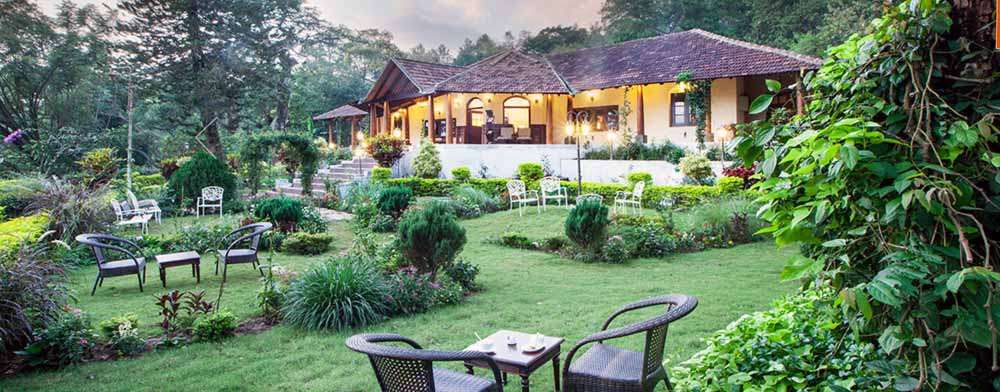
North.
Dehra Dun. In the north of India we’d recommend the hill station of Dehra Dun (base of the Survey of India at Hathibarkala Estate, New Cantt. Road) which apart from being located in the beautiful foothills of the Himalayas still has numerous historical maps made by our surveyors in its archives. Things may have changed now but we weren’t able to get copies of any of these as they were seen as breaching security issues around disputed boundaries of the country! We see there are certain downloads available at http://www.surveyofindia.gov.in/
Shimla. An old favourite for Anglophiles as the HQ of the British Government in India during the wet summer months; when the whole administration decamped to the hills. Much of the original British architecture remains (from the Viceregal Lodge to more humble bungalows) and is preserved to the extent that you could be in a mountainous but weathered Southend on Sea. The setting of the town is stunning with a backdrop of the Himalayas seen from its steep slopes and the journey to it by ‘toy’ train a delight as it winds its way up and along the steep hillsides.
Lucknow. One of the tinder boxes of ‘The Mutiny/War of Independence’ was the Lucknow residency where British troops defended themselves and hundreds of civilians within the walls of the Residency. Even since Indian Independence, little has changed. The Residency is preserved as it was at the time of the final relief, with shattered walls still scarred by cannon shot. The ruined building is surrounded by well maintained lawns and flowerbeds. The cemetery nearby at the ruined church marks the final resting place of 2000 men, women and children, including the grave of Sir Henry Lawrence who died during the siege and this action still holds the record, at 24, for the highest number of awards of the Victoria Cross in one day.
Darjeeling. Darjeeling is a town in West Bengal, in the Himalayan foothills. Once a British summer resort its still known for being the terminus of the narrow-gauge ‘Toy Train,’ completed in 1881. The British established extensive tea plantations that still remain on its surrounding slopes in the Himalayan foothills where the distinctive black tea is grown. With the backdrop of Mt. Kanchenjunga, among the world’s highest peaks, its a superb destination irrespective of its historic links.
Central
Pachmarhi. We lived here for six of our seven years in India and its an idyllic hill station in the central highlands of Madhya Pradesh, surrounded by the natural jungle of Satpura National Park. Its also the old administration summer hill station of the British in central India together with its garrison of British Army personnel. The fact that its effectively a dead-end in terms of road routes means that its only an Indian tourist destination and largely untouched in terms of preserving what once was. The original road layout of the plateau remains, most of the old colonial buildings have been preserved and are still inhabited, some now used as hotels; and the original army ‘Cantonment’ area remains as an Indian Army base and is similarly maintained, albeit off limits to visitors. If you really want an appreciation of British life in the hills then Pachmarhi is a must.
South
Ootacamund. Udhagamandalam or ‘Ooty’, came under the rule of the East India Company at the end of the 18th century and subsequently served as the summer capital of the Madras Presidency, becoming a popular summer resort. Capital of the Nilgiri Hills district of Tamil Nadu its situated about 60km north of Coimbatore. Known as the Queen of the Hills, she rests some 2,240 mtrs above sea level on a plateau of lush dense vegetation. Our children were schooled here and our main recollection is of it being a busy and damp location surrounded by beautiful scenery. Some principal buildings/churches remain to mark the colonial era.
Coorg. In 1834 Kodagu became a part of East India Company’s terrain and was given its English name Coorg. The misty hills of Kodagu, or Coorg, with their lush teak sandalwood forests, acres of tea and coffee plantations are breathtaking – earning it the nickname of ‘The Scotland of India’. There is little evidence of British rule here now but some of the original properties have been converted to accommodation – such as Old Kent Estates.
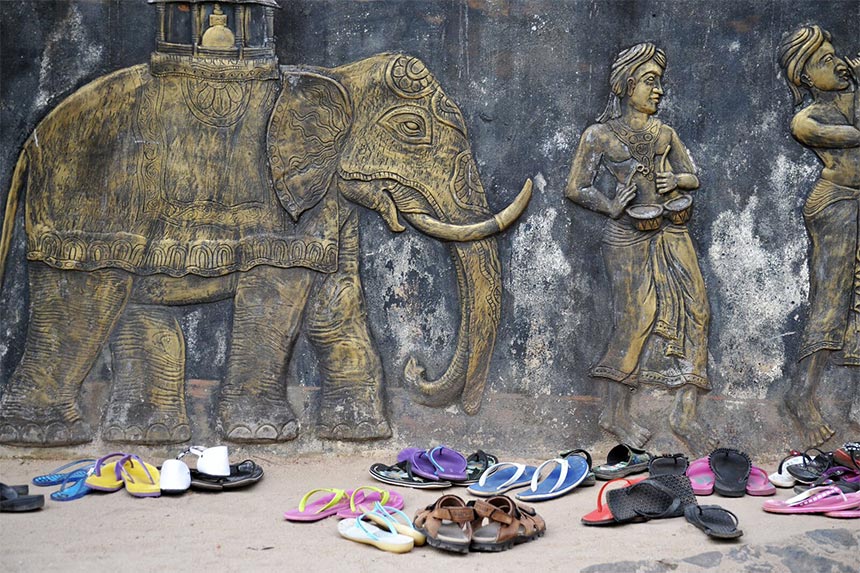
6) You’d like to get an appreciation of the principal religious faiths in India, their festivals and landmarks.
The Indian subcontinent is the birthplace of four of the world’s major religions; namely Hinduism, Buddhism, Jainism and Sikhism. The two principal faiths being Hinduism (78%) and Islam (about 14%), The remaining 8% is made up of Christianity and many ‘minor’ religions such as Buddhism, Jainism, Sikhism, Zoroastrianism and Judaism.
Each has a spiritual centre within India, perhaps with the exception of Christianity, which is still practiced within the Church of India catholic and protestant churches left behind by colonists.
Hinduism. There is no shortage of temples and pilgrimage sites in India for the Hindu faith – some easily accessible, many not, on the tops of mountains and in extremely remote areas. In our opinion a visit to Varanasi (Benares) encapsulates many of the sects within Hinduism and gives a wonderful insight into Hindu religious practice. The Khajuraho Group of Monuments is a group of Hindu and Jain temples in Madhya Pradesh, India, about 175 kilometres southeast of Jhansi and epitomises the incredible sculptural and architectural skills of the 10th century
Islam. Whilst Taj-ul Masajid in Bhopal is the largest mosque in India, Jama Masjid located in old Delhi is the more easily accessible for all. Its sheer scale is breathtaking and its capacity for worshipers enormous. One of the most holy places of Islam in India is the Ajmer Sharif Dargah in Ajmer, Rajasthan, where its believed that no prayer goes unanswered. The white marble tomb of Sheikh Salim Chishti, commissioned by the court of Mughal Emperor Akbar, is one of the most significant Sufi shrines in India and also considered as a sacred place among Hindus, occupying a prominent position in the centre of Fatehpur Sikri. If you’re in Mumbai its worth a foray to Haji Ali Dargah, located at the end of an islet that protrudes into the Arabian Sea in Southern Mumbai.
Buddhism. Buddhism is marked by four major sites of pilgrimage: the Buddha’s birthplace at Lumbini; the site where he attained ‘Enlightenment’, Bodh Gaya; where he first preached at Benares, and where he achieved Parinirvana at Kusinagara. Several well-preserved and maintained Stupa can be seen at Sanchi, just nottheast of Bhopal in Madhya Pradesh.
Sikhism. Amritsar is the must visit spiritual Gurdwara for Sikhism. Originally a sub-set of Hindusim, Sikhism grew from the strongest members of Hindu families who gathered in military defence of their kin; subsequently becoming a distinctive sect and religion in their own right. The most well-known Gurdwara is the Harmandir Sahib (best known as The Golden Temple) in Amritsar, Punjab. A more readily accessed temple is Gurudwara Bangla Sahib in Delhi where the ‘Langar’ is a huge communal kitchen where huge vats of food provide for anyone who needs a good meal.
Jainism. Only approx 4 million Jains, renowned for their protection of all living things, live in India but are found in 34 out of 35 states. The state of Jharkhand, with a population of 16,301 Jains also contains the holy pilgrimage centre of Shikharji.
Zoroastrianism. Mumbai has the largest Zoroastrian population (known as Parsis) of any city in the world and is seen by them as the religion of Iranian blood; where they were originally exiled from. Most traditional Parsis throughout India have for the last hundred years considered Bombay to be their main spiritual centre. Many corner shops and businesses in Mumbai bear the sign of the Parsis – an eagle with spread wings.
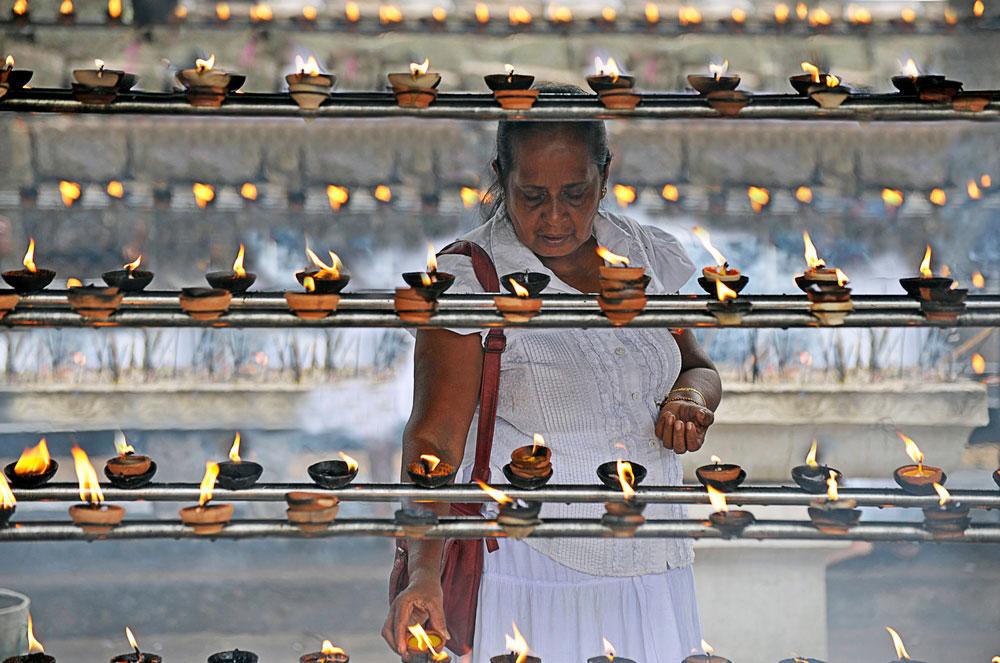
Festivals.
It became evident whilst we lived in India that virtually everyone takes the opportunity to celebrate everyone else’s religious festivals, especially as it means a public holiday! The list here isn’t definitive but covers the most important and colourful festivals that are celebrated throughout the whole of India (as opposed to regionally) together with their timings.
Diwali. Hindu festival of lights – marked by ‘ranguli’ painting on the ground in front of houses, many little oil-filled clay lights and general house cleaning and new clothes buying after the monsoons on the darkest new moon night of Mid October-mid November. Fireworks mark night-time celebrations, although Delhi recently banned them because of the pollution created!
Holi. Hindu ‘ festival of colours’, holi is one of the most famous festivals in India, celebrated with passion and energy across the country. On the eve of Holi, huge bonfires are lit for people to sing and dance around, whilst vast clouds of powder colour is thrown over everyone. Don’t celebrate Holi on the full moon of March unless you fancy a new wardrobe!
Dusshera. Hindu festival celebrated in different forms countrywide for ten days in September/October depending on moon phase, with the big event being the burning of enormous effigies of Ravana, Meghnad, and Kumbhakaran.
Ganesh Chaturthi. A ten day Hindu festival during August/September that culminates in beautifully crafted life sized idols of Ganesha being ceremonially immersed in rivers and the sea.
Gurupurab. Sikh festival of the November full moon when people light up their homes with lamps and candles and burst crackers to celebrate. Noted for its street processions and singing of chants and hymns.
Eid-Ul-Fitr. Eid, the principal Muslim festival in July, celebrates the conclusion of the holy month of fasting called Ramadan. Notable for beautifully decorated Muslim shops and homes together with morning worship in Mosques and an endless supply of sweets.
Kumbh Mela. The Kumbh Mela is held once in 12 years in each of four main locations throughout India. There is a difference of around 3 years between the Kumbh Melas at Haridwar and Nashik, whilst the fairs at Nashik and Ujjain are celebrated in the same year or one year apart – timing of each relating to calendar and zodiac alignments of Jupiter, the sun and moon. Reputed to be the largest peaceful gathering of people on earth, it has reportedly featured as many as thirty million faithful in one day in one location – so you might think twice before attending!
![]()
See some of our example India itineraries here:






